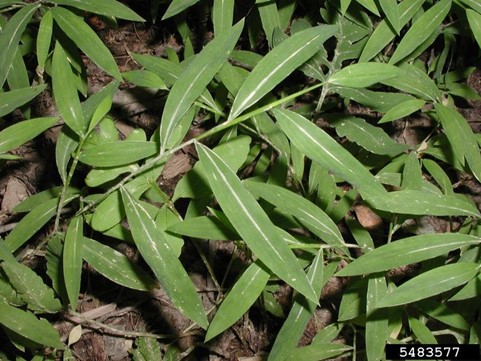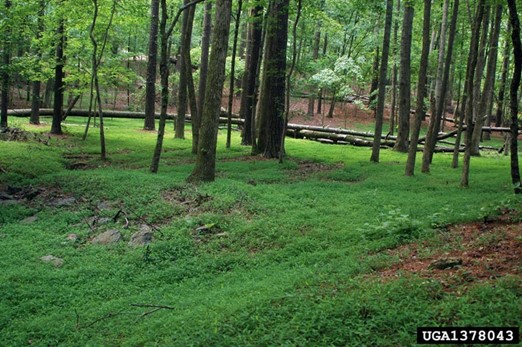By: Madison Sturba, Training and Outreach Intern
Japanese stiltgrass (Microstegium vimineum), which is one of the most damaging invasive plants in the United States, was discovered in Short Hills Provincial Park in southern Ontario in 2019. While this small population is actively monitored and under official control, the possibility of Japanese stiltgrass escaping Short Hills Provincial Park remains a concern.
This invasive plant was originally detected in Tennessee in the early 1900s and has since spread throughout the Southern and Midwestern United States, including New York, Ohio, and Pennsylvania. The arrival of Japanese stiltgrass into Canada was unfortunately not surprising given the proximity of these neighbouring states to Ontario.

Japanese stiltgrass is an annual grass that dominates the forest floor with monospecific stands that completely outcompete native species for access to resources. By sprawling out in low-light areas, Japanese stiltgrass reduces the amount of available habitat and nutrients for native plants, making it harder for them to grow and reproduce. It has an easily recognizable reflective shiny midrib down the center of each leaf blade that sets it apart from look-a-like native species. Their leaves are green in the summer but turn slightly purplish come autumn during flower and seed production.
Japanese stiltgrass produces an incredible number of small seeds that are highly mobile and easily moved by humans, animals, or water. Each plant can produce 100-1000 seeds in a single growing season, which can amount to 16,000-50,000 seeds per square meter of land! This prolific seed production is concerning as it allows the plant to spread very quickly and aggressively across a landscape.

Early detection and a coordinated rapid response to invasive species is extremely important when trying to contain, prevent, and eradicate their presence in native habitats. Japanese stiltgrass has not yet spread from its one known location in Southern Ontario. We can prevent it from spreading further, and even eradicate the invader completely, by increasing public awareness and eyes-on-the-ground monitoring. Keep your eyes peeled for this invasive plant when walking outdoors in disturbed habitats of forests or wetlands. Know what to look for, and if you think you’ve seen Japanese stiltgrass, report the sighting immediately by visiting https://www.invasivespeciescentre.ca/report-a-sighting/ or https://www.eddmaps.org/.
